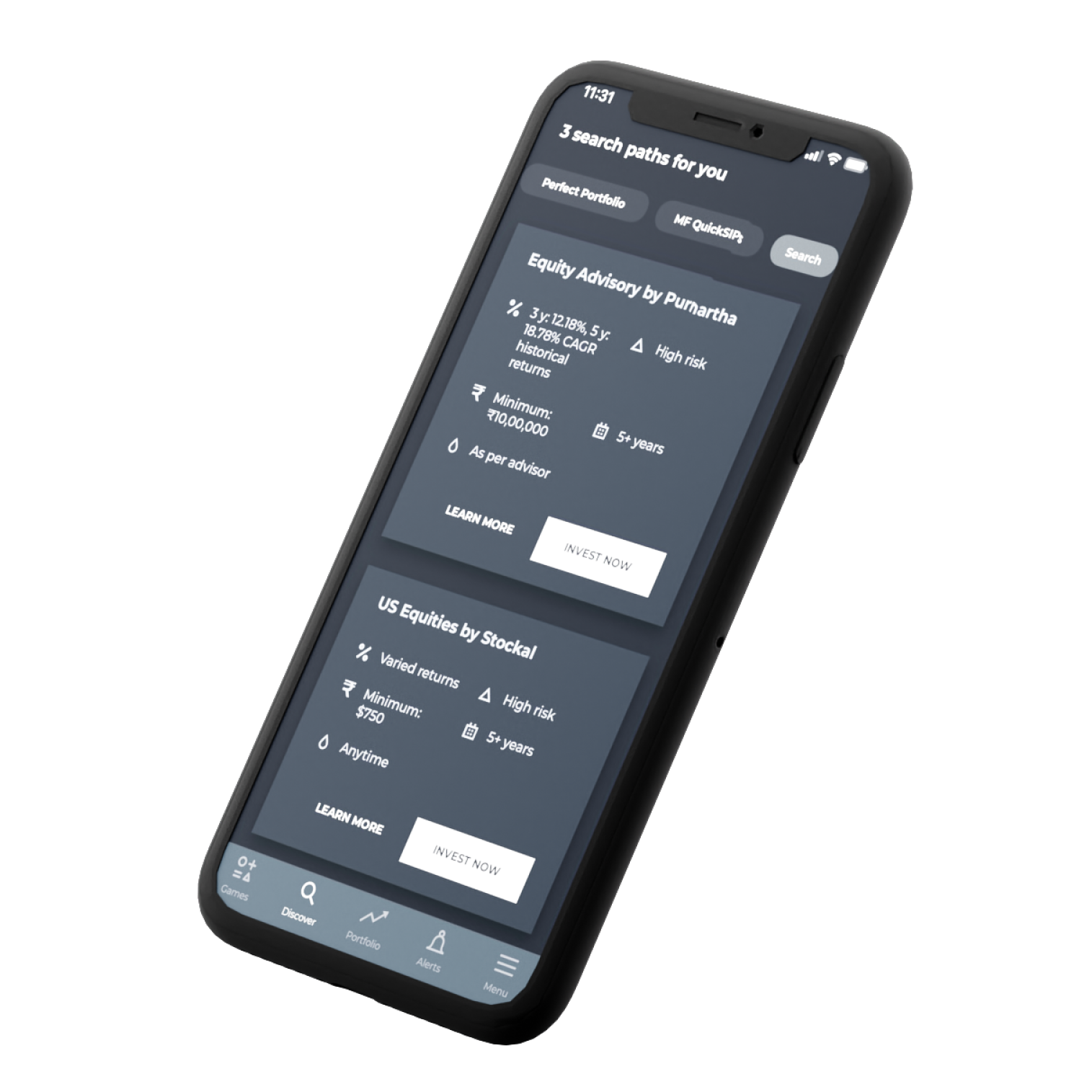
.jpg)
Tax planning is an essential aspect of financial management for salaried individuals, aimed at optimizing their tax liabilities while simultaneously securing their financial future. Two prominent avenues for tax-efficient investments in India are the National Pension System (NPS) and the Employees' Provident Fund (EPF). These investment options not only help individuals reduce their tax burden but also facilitate long-term wealth creation and retirement planning. In this blog, we will delve into the intricacies of these investment tools, exploring how they work, their tax benefits, and strategies for incorporating them into your financial plan to achieve your short-term and long-term financial goals. So, let's embark on this journey to understand how NPS and EPF can be valuable components of your tax planning and financial well-being.
The National Pension System is a voluntary, long-term retirement savings and investment scheme introduced by the Government of India. It was launched in 2004 and has since gained popularity as an effective way for individuals to plan for their retirement years. The NPS is regulated and administered by the Pension Fund Regulatory and Development Authority (PFRDA).
NPS offers a systematic and structured approach to building a retirement corpus by allowing individuals to contribute regularly during their working years. It is open to both salaried and self-employed individuals, making it a versatile retirement planning tool.
One of the key features of NPS is its flexibility, allowing investors to choose between various asset classes and fund managers. This enables individuals to tailor their investments according to their risk tolerance and financial goals. Moreover, NPS provides attractive tax benefits, making it an essential component of tax planning for salaried individuals.
The Employee Provident Fund (EPF) is a mandatory retirement savings scheme in India, where both employees and employers contribute a portion of the employee's salary to build a substantial retirement corpus. With tax benefits, a competitive interest rate, and provisions for partial withdrawals for specific purposes, EPF serves as a crucial financial safety net for salaried individuals, ensuring financial security during their retirement years.
EPF also promotes financial discipline and long-term savings habits among the workforce, offering a stable avenue for retirement planning that remains consistent across different employers through the Universal Account Number (UAN). The scheme's tax-exempt status on interest earned and withdrawals, coupled with the government's oversight and guaranteed returns, makes EPF a reliable and attractive component of an individual's financial portfolio, providing peace of mind and a secure financial future.
Both the National Pension System (NPS) and the Employee Provident Fund (EPF) offer attractive tax benefits to individuals, making them valuable tools for tax planning and long-term financial security.
Contributions made to the NPS are eligible for a deduction under Section 80C of the Income Tax Act, up to a maximum limit of ₹1.5 lakh per financial year. This deduction includes contributions made by both the employee and the employer.
NPS contributors can avail an additional deduction of up to ₹50,000 under Section 80CCD(1B) of the Income Tax Act, over and above the Section 80C limit. This exclusive deduction encourages individuals to save more for their retirement.
The employer's contribution to the NPS, up to 10% of the employee's basic salary and dearness allowance, is tax-exempt under Section 80CCD(2). This benefit helps individuals accumulate a larger retirement corpus.
While contributions to the NPS are tax-deductible, the scheme also offers tax benefits on withdrawals. At the time of retirement, a portion of the NPS corpus can be withdrawn tax-free, while the remaining portion can be used to purchase an annuity, providing a regular income stream in retirement.
Similar to NPS, EPF contributions made by employees are eligible for a deduction under Section 80C of the Income Tax Act, subject to a maximum limit of ₹1.5 lakh per financial year. This includes the employee's own contributions.
The interest earned on EPF contributions is tax-free, providing an added advantage as it accumulates over the years.
EPF withdrawals made after five continuous years of service are entirely tax-exempt. This tax-free status applies to both the principal amount and the accumulated interest.
In conclusion, both NPS and EPF offer significant tax benefits that not only reduce an individual's tax liability during their working years but also provide a tax-efficient way to accumulate a retirement corpus. By leveraging these tax incentives, individuals can enhance their long-term financial security while meeting their retirement goals. However at Cube we suggest that it's essential to understand the specific rules and regulations governing NPS and EPF contributions to maximize their tax advantages effectively. You can consult a Cube Wealth coach or download a Cube Wealth application to mitigate these tax benefits associated with NPS.
Combining the National Pension System (NPS) and the Employee Provident Fund (EPF) can be a strategic approach for maximizing tax savings while building a substantial retirement corpus. Here's how you can leverage both these investment options effectively:
Start by contributing to the NPS to the extent that you can maximize the additional deduction available under Section 80CCD(1B) of the Income Tax Act, which allows an extra deduction of up to ₹50,000 per financial year over and above the Section 80C limit. This ensures that you're taking full advantage of the NPS tax benefits.
Allocate your contributions between NPS and EPF based on your financial goals, risk tolerance, and tax-saving objectives. EPF contributions are mandatory if you are a salaried individual, but you can increase your voluntary NPS contributions to maximize the tax benefits and investment flexibility.
NPS allows you to choose between different asset classes (Equity, Corporate Bonds, and Government Securities) and fund managers, enabling you to tailor your investment strategy. Assess your risk profile and financial goals to determine the allocation that aligns with your preferences and requirements.
If your employer provides a contribution matching scheme for NPS, consider taking full advantage of it. This can significantly boost your retirement savings without increasing your tax liability.
Periodically review your NPS and EPF contributions, investment choices, and overall financial plan. Adjust your allocations as needed to stay on track with your retirement goals and tax-saving objectives.
Be aware of the conditions under which you can make partial withdrawals from both NPS and EPF. Utilize these provisions for specific financial goals such as buying a home, funding education, or dealing with emergencies while keeping the long-term retirement goal intact.
To further enhance your retirement savings, consider diversifying your investments beyond NPS and EPF, such as investing in other tax-saving instruments like Public Provident Fund (PPF), tax-saving fixed deposits, or equity-linked savings schemes (ELSS) under Section 80C.
Given the complexity of tax laws and the evolving financial landscape, consider consulting a Cube Wealth Coach or can download a Cube Wealth application to create a customized strategy that optimizes your tax savings and retirement planning based on your unique circumstances.
By strategically combining NPS and EPF contributions, you can maximize your tax savings, build a robust retirement corpus, and achieve your long-term financial goals while ensuring financial security during your post-employment years. It's essential to maintain a balanced approach that aligns with your specific financial situation and objectives.
Efficient tax planning is crucial for salaried individuals to optimize their tax liabilities and maximize savings. Here are some tips to help you effectively plan your taxes:
Familiarize yourself with the various components of your salary, such as basic salary, allowances, bonuses, and perquisites. Different components have different tax treatments.
Make the most of Section 80C by investing in tax-saving instruments like the Employee Provident Fund (EPF), Public Provident Fund (PPF), National Savings Certificates (NSC), Tax-saving Fixed Deposits, and Equity-linked Savings Schemes (ELSS). You can claim deductions of up to ₹1.5 lakh under this section.
Consider contributing to the National Pension System (NPS) to benefit from deductions under Section 80CCD(1B) of up to ₹50,000, which is over and above the Section 80C limit.
If you receive House Rent Allowance (HRA), ensure that you claim deductions as per Section 10(13A) of the Income Tax Act. If you pay rent, keep records of rent receipts and other required documents.
Salaried individuals can avail the standard deduction on their income, which was introduced in recent tax reforms. Make sure you claim this deduction, which is applicable up to a certain limit.
Submit your investment proofs to your employer in a timely manner to ensure accurate TDS (Tax Deducted at Source) deductions from your salary. This can help prevent excessive tax deductions during the year.
Invest in health insurance for yourself and your family. Premiums paid for health insurance policies are eligible for deductions under Section 80D.
If you have taken a home loan, remember to claim deductions under Section 24(b) for interest payments and under Section 80C for principal repayments.
Ans. Yes, you can contribute more than the mandatory percentage to both NPS (National Pension System) and EPF (Employee Provident Fund) voluntarily. Contributing extra to NPS allows you to avail additional tax benefits under Section 80CCD(1B), while exceeding the EPF's mandatory contributions can enhance your long-term savings without additional tax benefits but ensures a larger retirement corpus.
Ans. When you switch jobs, your NPS (National Pension System) account remains active and portable. You can choose to either continue contributing to the same NPS account or open a new NPS account with your new employer. In contrast, your EPF (Employee Provident Fund) account also remains active, but you have the option to transfer the balance to your new employer's EPF account or withdraw the amount if you are unemployed for more than two months. It's advisable to transfer your EPF balance to ensure continued accumulation for your retirement savings.
Ans. Yes, there are withdrawal restrictions on both NPS (National Pension System) and EPF (Employee Provident Fund) contributions. In NPS, partial withdrawals are allowed for specific purposes like buying a home, medical emergencies, or education, but full withdrawal is typically permitted only at retirement age or after reaching the age of 60. In EPF, partial withdrawals are allowed for purposes like buying a home, medical emergencies, or during unemployment, but the full withdrawal is generally allowed after retirement or at the age of 58. Early withdrawals from both NPS and EPF may have tax implications and conditions that need to be met.
Ans. To calculate tax savings from NPS and EPF contributions, sum up the contributions made to both accounts during the financial year. Deduct the total amount from your gross taxable income. The remaining income is what you will be taxed on, resulting in a reduction in your taxable income, which can be calculated based on your applicable tax slab. Additionally, NPS contributions under Section 80CCD(1B) can be claimed as an extra deduction of up to ₹50,000 over and above the Section 80C limit, leading to additional tax savings. EPF contributions made under Section 80C are eligible for deduction up to ₹1.5 lakh.
Ans. If you miss contributing to NPS (National Pension System) in a particular year, it won't affect your existing NPS account, but you will miss out on potential tax benefits for that year. In the case of EPF (Employee Provident Fund), if you fail to make contributions in a specific year due to unemployment or other reasons, your EPF account remains inactive during that period. It's advisable to resume contributions as soon as possible to continue building your retirement corpus and take advantage of the associated tax benefits.
Investing in the National Pension System (NPS) and the Employee Provident Fund (EPF) stands as a cornerstone of efficient tax planning and long-term financial security for salaried individuals in India. These schemes not only help reduce tax liabilities but also facilitate disciplined savings for retirement, ensuring a comfortable and financially stable future. By strategically leveraging the tax benefits, flexibility, and diversified investment options offered by NPS and EPF, individuals can navigate their financial journey with confidence, all while securing their post-retirement years. It is essential to stay updated with changing tax laws and consider consulting a Cube Wealth Coach to make the most of these valuable investment avenues and ensure a financially prosperous tomorrow.
Please note: Some of the data has been sourced from Canarahsbclife, maxlifeinsurance & timesofindia.indiatoday websites.
Other Blogs You May Like:






on stock picking, poring over excel sheets, financial news, analyzing market trends, tracking the Sensex, researching company fundamentals, comparing mutual funds, reading financial reports, trying to predict the future & losing your sanity!